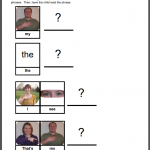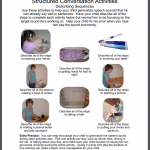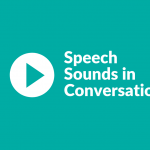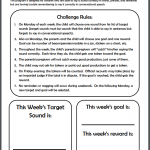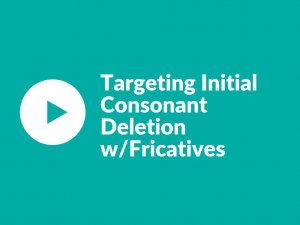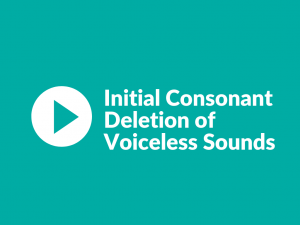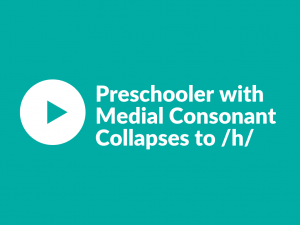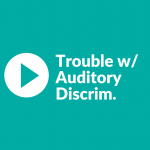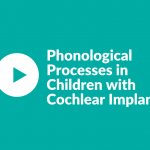Minimal Pairs Approach
Description:
Overview:
Task Analysis (How To):
- Choose a Process, Find Some Pairs: First you’ll need to pick which phonological process you’ll target and find some minimal pairs to go with it.
- Auditory Discrimination: Student will receptively identify the difference between two minimal pair words where the only sound difference between the two words is the target sound class vs. the replacement sounds (example: key and tea)
- Production in Single Words: Student will produce the target sound class in single words
- Production in Phrases: Student will produce the target sound class in 2-3 word phrases
- Production in Sentences: Student will produce the target sound class in sentences
- Production in Structured Conversation: Student will produce the target sound class in structured conversation
- Production in Unstructured Conversation: Student will produce the target sound class in unstructured conversation in a variety of enviornments
Activities:
First you’re going to need to choose a phonological process to address in your therapy. This should have come from your assessment. Look at which processes the child is using that are no longer age-appropriate and are impacting intelligiblity the most.
Once you’ve chosen a process, you need to help the child hear the difference between what she says and what is correct. For that, we will find minimal pairs. Minimal pairs are sets of two words that differ only by one sound. For this, the one sound that is different will be the exact sounds that the child is doing in error. For example, if the child is using velar fronting (changing all /k/ and /g/ sounds to /t/ and /d/), then some good minimal pairs would be “key” and “tea”, or “go” and “dough”. Remember, it’s all about how they sound, not how they’re spelled.
Assemble your list of minimal pairs now. Here are some visuals to get you started. Click the link below to be taken to the phonological process that you’re working on:
Ok, now that you’ve picked some pairs, let’s get started with helping your client hear the difference between the two sounds!
One of my favorite ways to do this is with a fun little game called “Hide the Penny”. Here’s how to play:
- Place two cards in front of the child (a minimal pair). Tell the child what each one is called.
- Tell the child to close her eyes. Place a penny under one of the cards.
- Tell the child to open her eyes. Tell the child that you’re going to say the word that has the penny and they have to find it. Then, say the word by itself (not in a sentence) and see if the child picks up the right card.
- If the child doesn’t pick up the right card, point out the difference between the two sounds. Draw the child’s attention to your mouth and to the sound difference.
- Keep doing this until the child can hear the difference and pick the correct card each time.
For a video demonstration of the hide-the-penny game, click here!
You can play the hide-the-penny game for this step as well! Now, you’ll tell the child that you’re going to play the game again but this time, she’s not allowed to touch the cards, she has to tell you which card to pick up. Here’s how it goes:
- Place two cards in front of the child (a minimal pair). Tell the child what each one is called.
- Tell the child to close her eyes. Place a penny under the card with the sound that the child has trouble producing.
- Tell the child to open her eyes. Ask the child to guess which word is hiding the penny. Tell her she can’t touch them, she has to tell you.
- If she says the wrong word, repeat that (incorrect) word back to her and look under the incorrect picture. Have her try again. When she is confused, point out the difference between what she is saying and the word she is trying to say. Help use elicitation techniques to get her articulators in the right place to say the word correctly.
- Keep doing this until the child can say the sound class correctly in single words
For a video demonstration of the hide-the-penny game, click here!
Now that the child is able to say these words individually, it’s time to work on some short phrases. I like to start very simple by placing the two cards from a minimal pair in front of the child and having her say “I see ___. I see ___.”
Start simple like that and then work your way up to mixing the cards together and having her use a variety of different short phrases.
Here’s a phrase builder if you need it:
Is your client ready for sentences? Time to use those words to build sentences. I like to have my students try to come up with the sentences themselves. Bonus points if they can get two words with their target sound class into one sentence!
Use the cards/visuals you’ve been using for previous steps to continue with sentences.
Ok! Your client is able to use the target sounds in sentences, great!! Unfortunately, that doesn’t necessarily mean that he will automatically be ready for saying it correctly all of the time in conversation! Let’s try some of these simple structured conversation prompts to practice the sound in a more complex environment:
Sounds in Structured Conversation Pack
Reading Activities:
This is also a great time to have your client practice the new skill during reading activities. Here are a few resources to help you with that:
Now comes the hard part, getting them to do it the rest of the time!
Click Here to Watch the Carry-Over Webinar Recording
Tips for Encouraging Speech Sounds in Conversation
Speech Sound Carry-Over Challenge
Troubleshooting:
What do you do if these things don’t work the way they’re supposed to? Well, nothing’s ever easy, is it? Try these great troubleshooting tips that some of our other members have found helpful. Click the problem to drop down the link to the solution.

